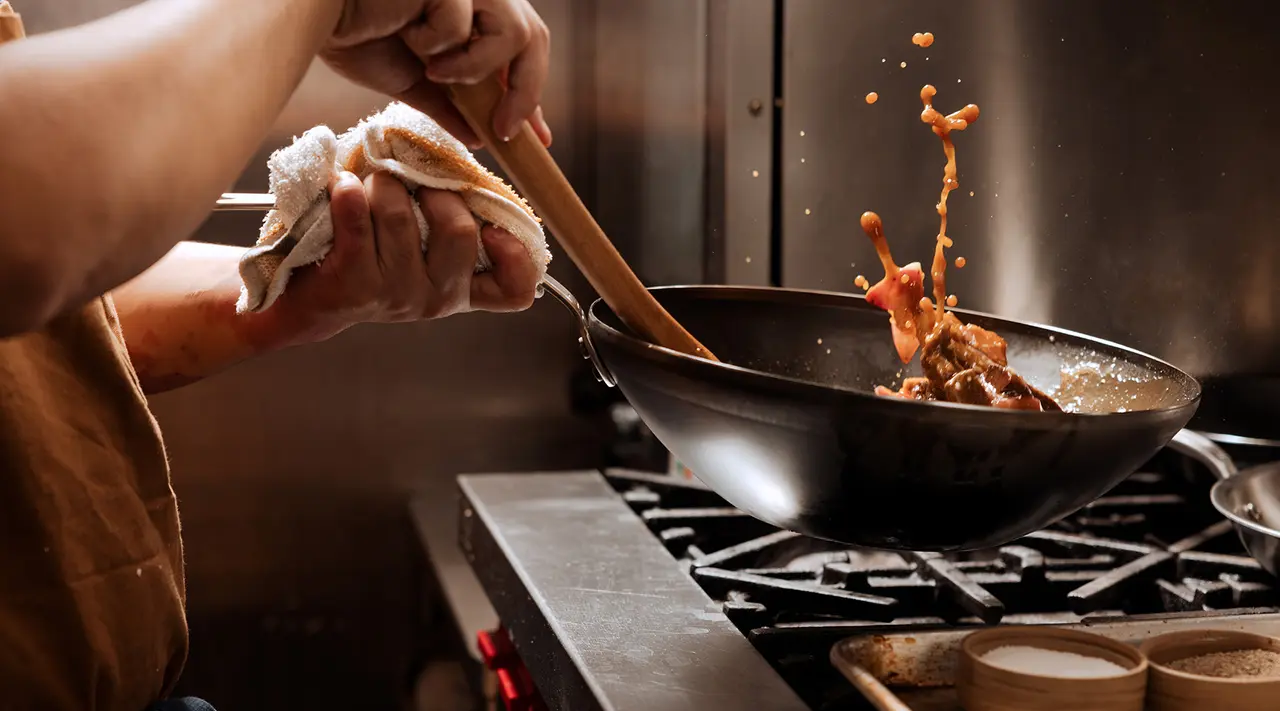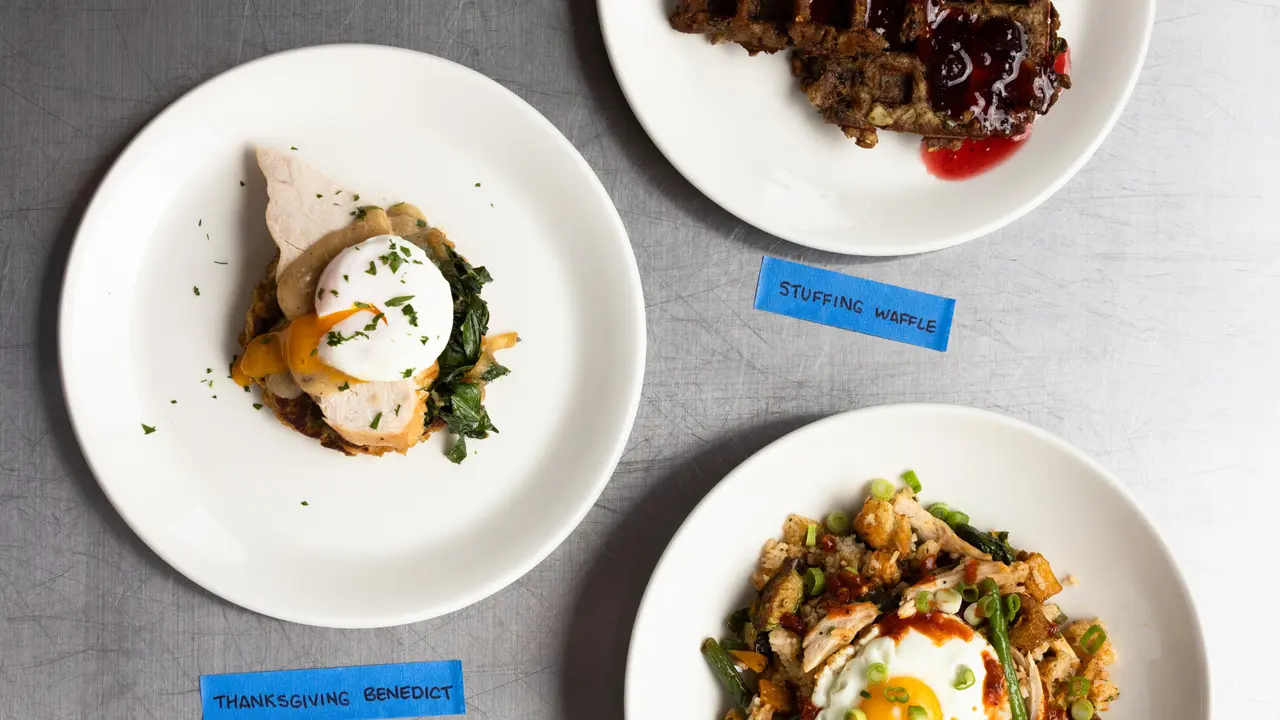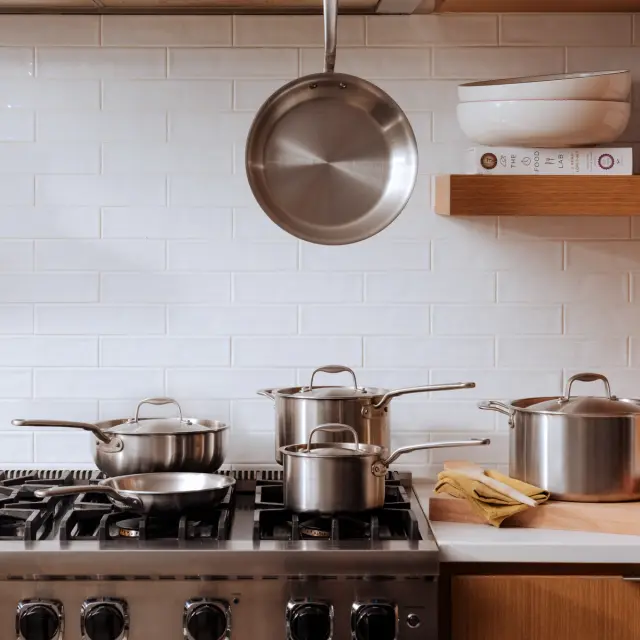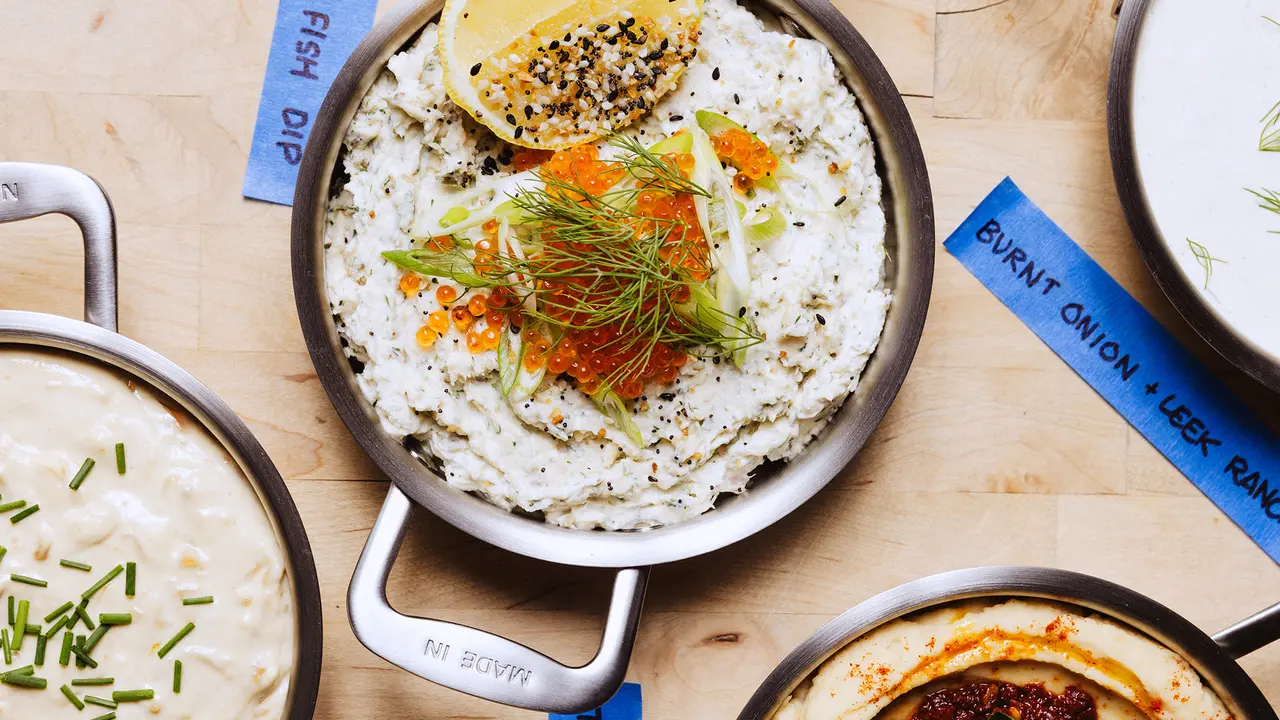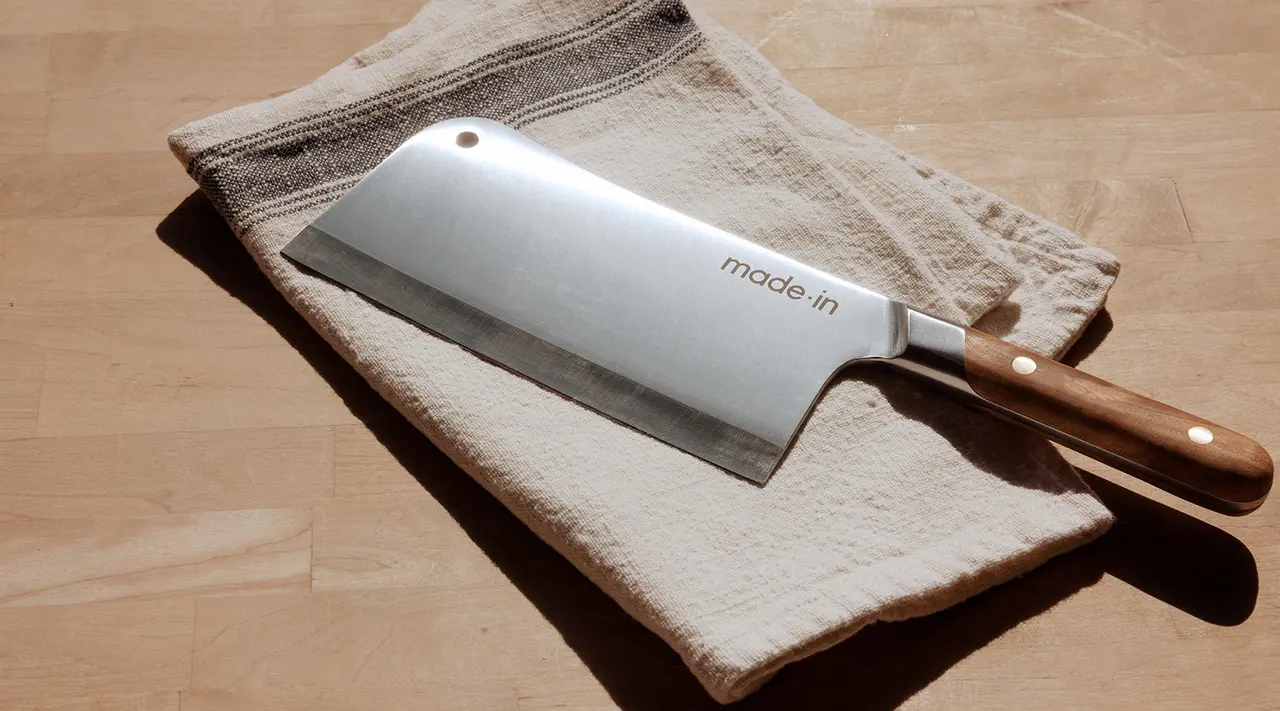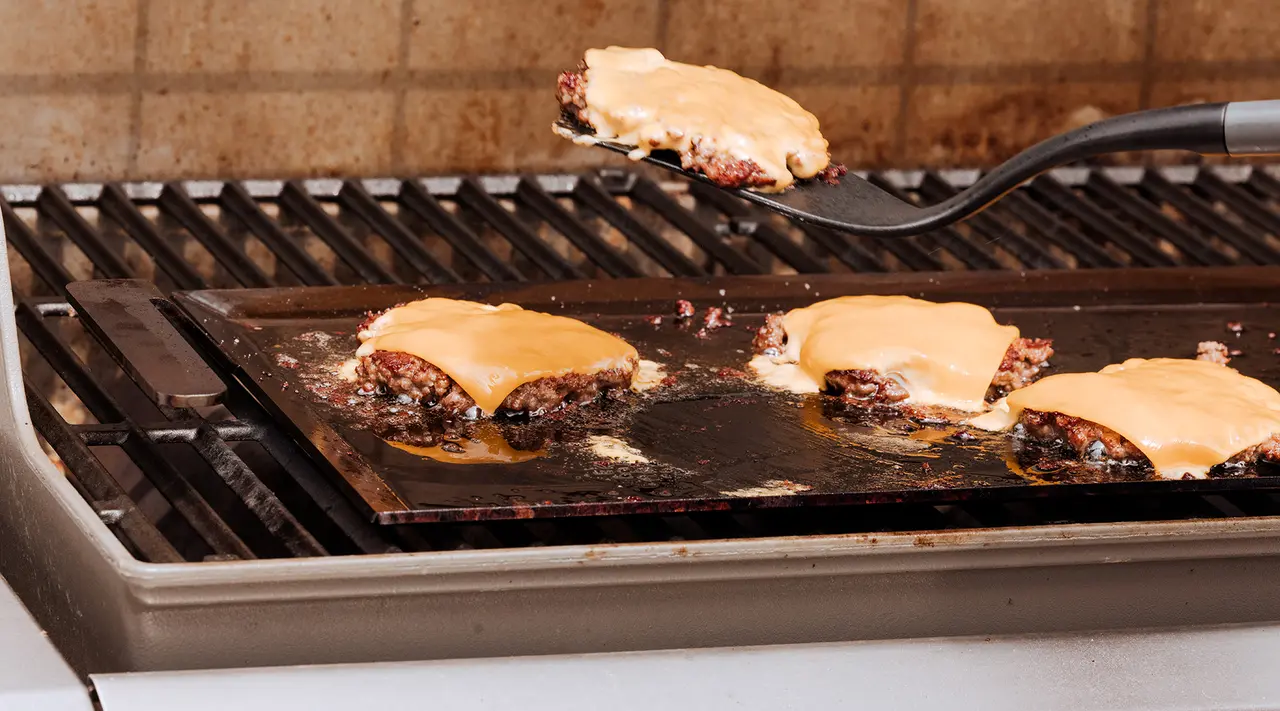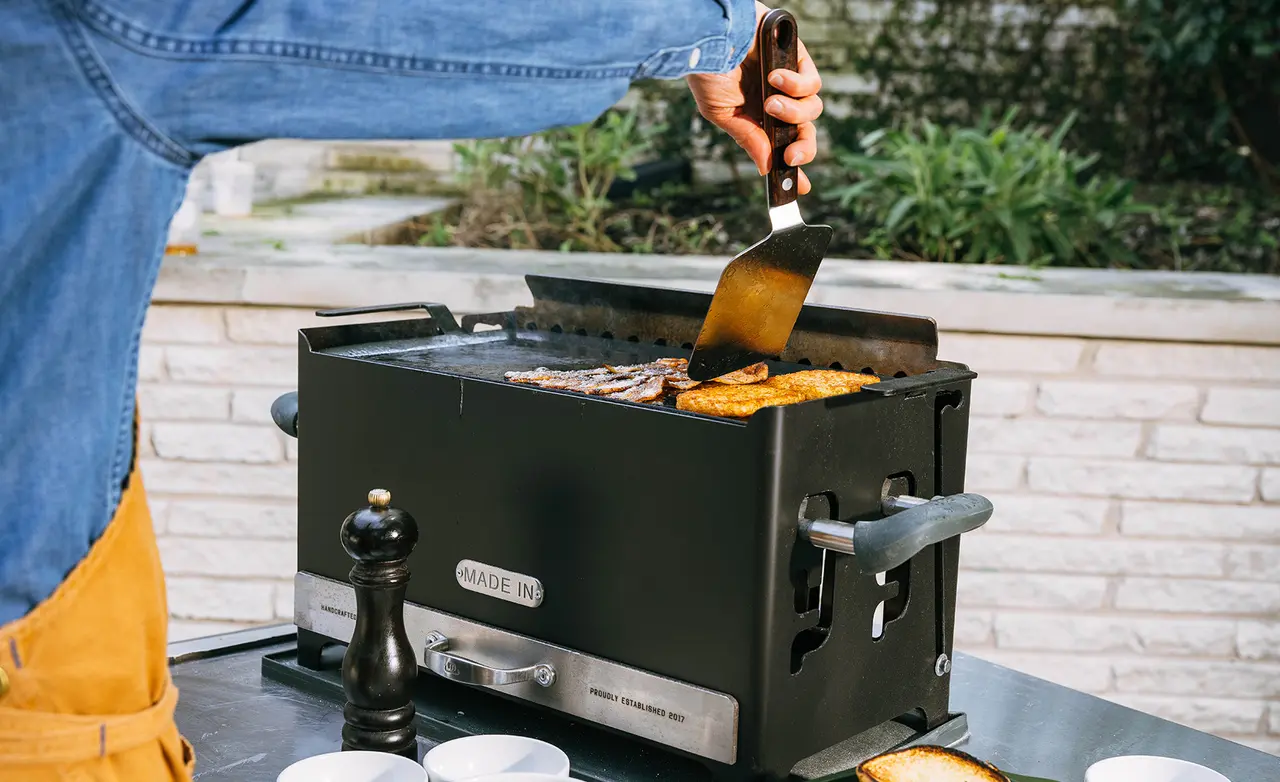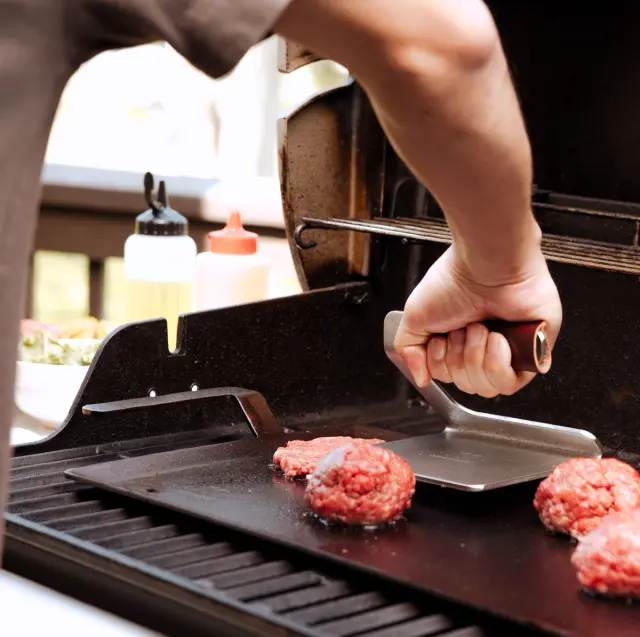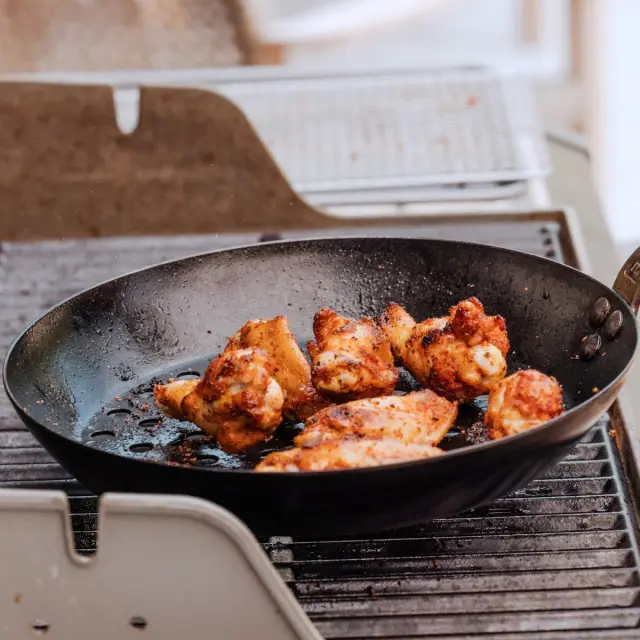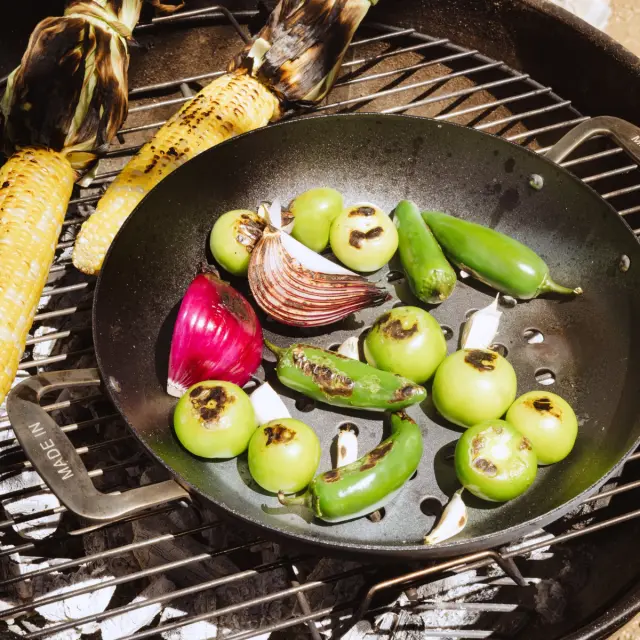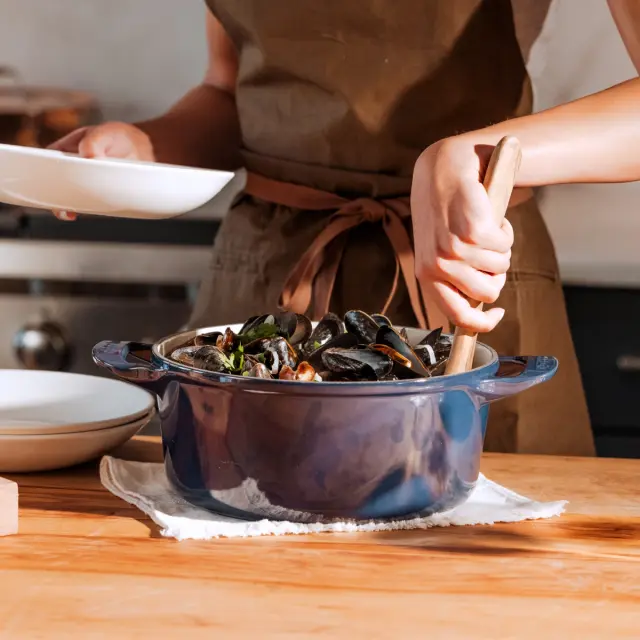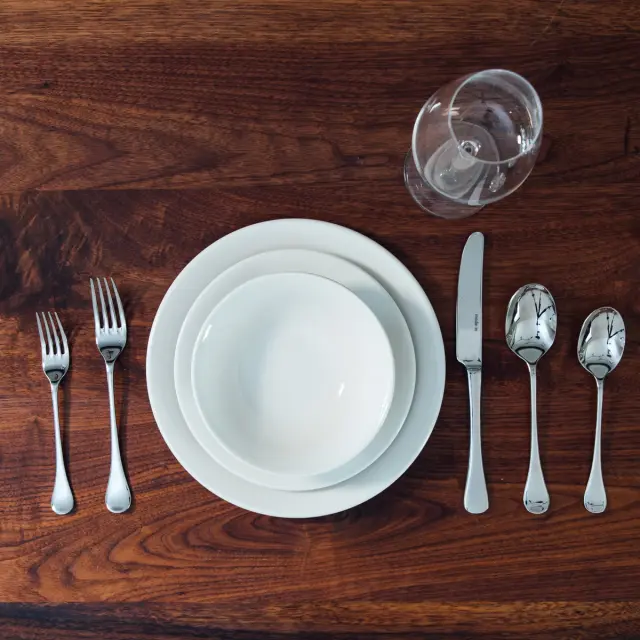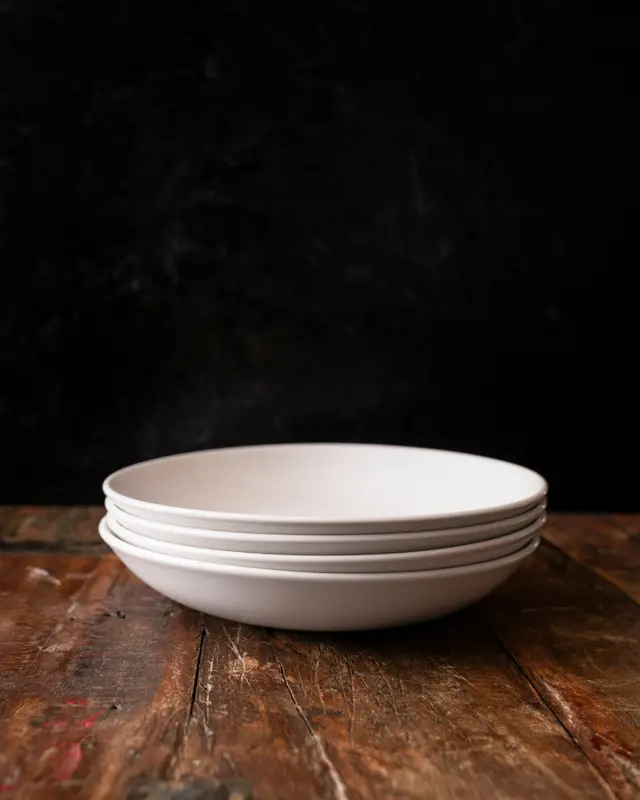Woks are the perfect stir-fry vehicle for professional and home chefs alike. Not only can they withstand very high heat, their shape is conducive to quick movements, which allow for fast, even cooking. As you move the food around, you’ll create tender, yet crisp, vegetables and proteins in a flash, that will shine on their own or pair with noodles or rice to make a fun and easy weeknight meal. We spoke with two experts, Chef Kenny Loo of Scorpion in San Antonio and Chef Eric Silverstein of The Peached Tortilla in Austin about everything you need to know to master stir-fry at home.
Prep All of Your Ingredients Beforehand
Stir-fry cooking happens in almost an instant, so prepping your ingredients before you even turn the stove on is a must. Prepare for your stir-fry by cutting your proteins (beef, pork, chicken, tofu, etc.) and vegetables into similar sized pieces. “But not too thin,” says Chef Loo. “Otherwise you’ll lose the unctuousness of flavor.” Whether in strips or cubes, each ingredient needs to be roughly the same size so they can cook evenly.
Choose Your Oil Wisely
For effective stir-frying, you need an oil with a high smoke point, preferably one above 400F. You can choose a neutral oil like peanut, grapeseed, or sunflower, but if you are looking to add more flavor to your dish, sesame oil is a great choice. Soybean and rice bran oils also work nicely if you can find them. If all else fails, vegetable oil will do in a pinch, though you’ll lose out on some flavor. Know this: the oil you choose will have a big outcome on the flavor of your finished dish.
Get Your Wok Screaming Hot
Chef Silverstein couldn’t stress enough how important it is to get your wok as hot as possible. “You want it screaming hot to the point that your oil is smoking,” he told us, adding that while extremely difficult to accomplish at home, it’s very important in developing a richer flavor. “The high heat is essential to wok cooking, it creates a rich Maillard reaction,” adding that, “it helps create this umami-style flavor that is hard to replicate without that level of heat.” The super high temperature helps contribute to wok hei or “breath of wok”, a signature, but difficult to achieve smoky flavor essential to Chinese wok cooking. "You probably won't be able to achieve wok hei at home," says Silverstein, "just because your stove won't get hot enough, but you can get pretty close."
Make Sure Everything Is Dry, Seriously
Make sure your ingredients are as dry as possible before adding them to the wok. If they are not, you not only risk altering the wok's temperature, but you’ll end up with softer steamed food instead of the crisper seared food you were hoping for. Remember that salt will draw out moisture, so use a paper towel to blot your proteins after seasoning them. Also, adding water to a very hot pan can cause the oil to spit back at you, so use caution while cooking.
Be Intentional About Adding Ingredients In
“Before you start cooking, it is important to remember that adding ingredients to your pan will lower the pan’s temperature,” says Chef Loo. Add in your ingredients a few at a time, and be mindful to raise the temperature of the stove if the proteins or veggies fail to sizzle when they make contact with the pan.
Chef Loo recommends cooking your proteins first. They will release their natural fats, which is a fantastic way to add flavor to your vegetables. Once the oil is hot, add your protein and start stirring and tossing. When it is nicely charred, remove your protein and allow it to rest.
Next, add your vegetables. Heartier fare such as carrots, broccoli, and especially potatoes might need more time than the rest of your raw vegetables, so if you’re using these, Chef Loo recommends giving them a head start by par-cooking them first. This could be either a quick steam or a boil in salted water. With this added step, they'll cook evenly alongside thinner vegetables like asparagus, snap peas, string beans, snow peas, and bok choy. If you are adding greens to your stir-fry, those should go in last, because they will wilt quickly.
Don't Just Dump Your Sauce
Finally, once your vegetables are nicely charred and cooked through, incorporate your protein back into the wok, and add in your sauce. “A technique that a lot of chefs use is to pour the sauce onto the spoon or spatula you’re using and spread it around the edges so it hits the pan. This will caramelize the sauce and generate a lot of flavor,” says Chef Silverstein. Be mindful of adding ingredients such as citrus juice or rice wine vinegar as too much acid in direct contact with the surface of the wok can and will damage its finish.
